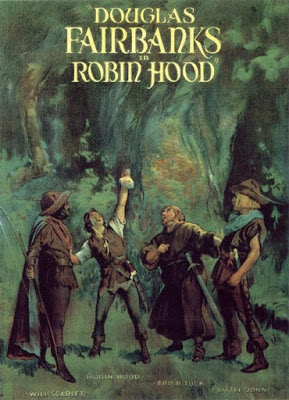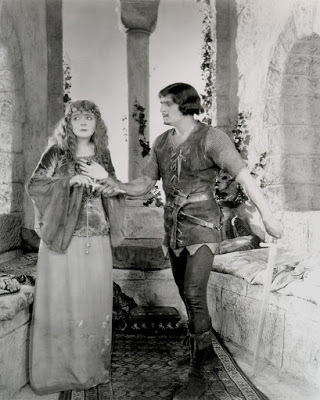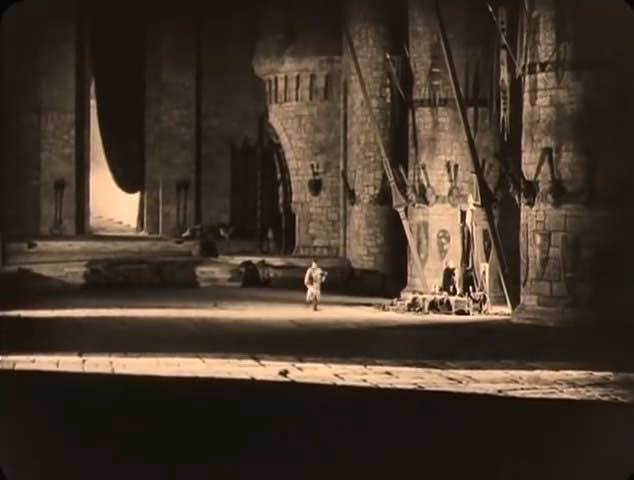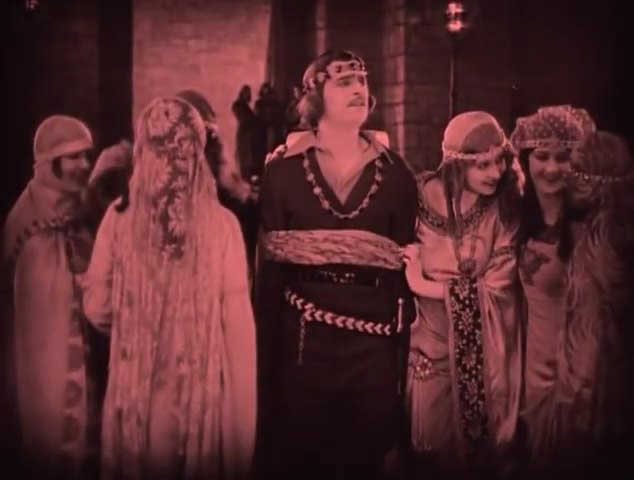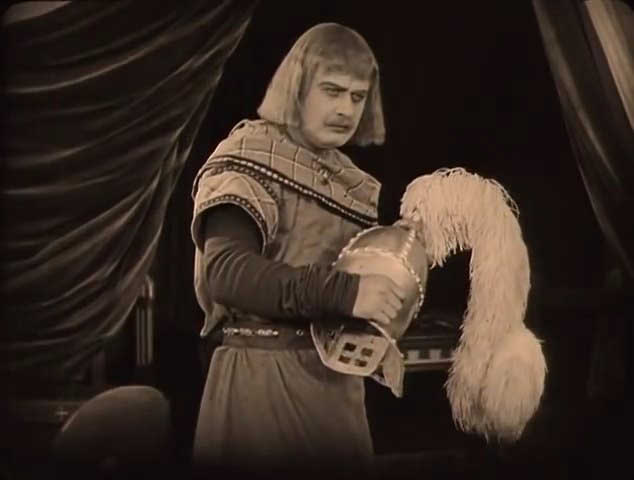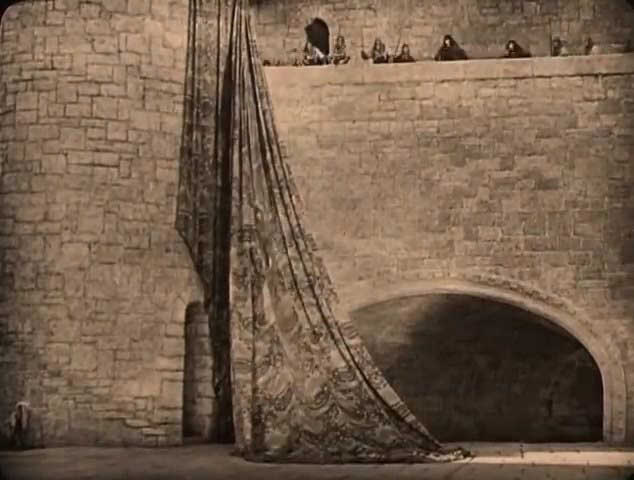Director: Allan Dwan
Year: 1922
Rating: 6.0
After the box office success of The Mark of Zorro and The Three Musketeers,
Douglas Fairbanks turned to another iconic fictional adventure hero, Robin
Hood. Initially, when the idea was brought to his attention he was not interested
because he thought he would look foolish running through the forest in tights.
And in truth at times he does. What passed for youthful high spirits then
as he merrily jumps and skips about and pumps his fist seems more than a
little fanciful now. But he was persuaded by director Allan Dwan that it
would give him the opportunity to use his archery and athletic skills. Dwan
is a fascinating figure in the directing ranks of Hollywood lore. He was
26 years old when he began directing shorts in 1911. He was to work steadily
over the next fifty years amassing over 400 directorial credits - and yet
how many people could name one Allan Dwan film? Well, now you can! He was
a director who was as far from being an auteur as you can find. He was hired
or assigned to make a film and he did it well with a large degree of competency
and on budget. He was a studio creature and over his career he worked or
knew everyone. 

